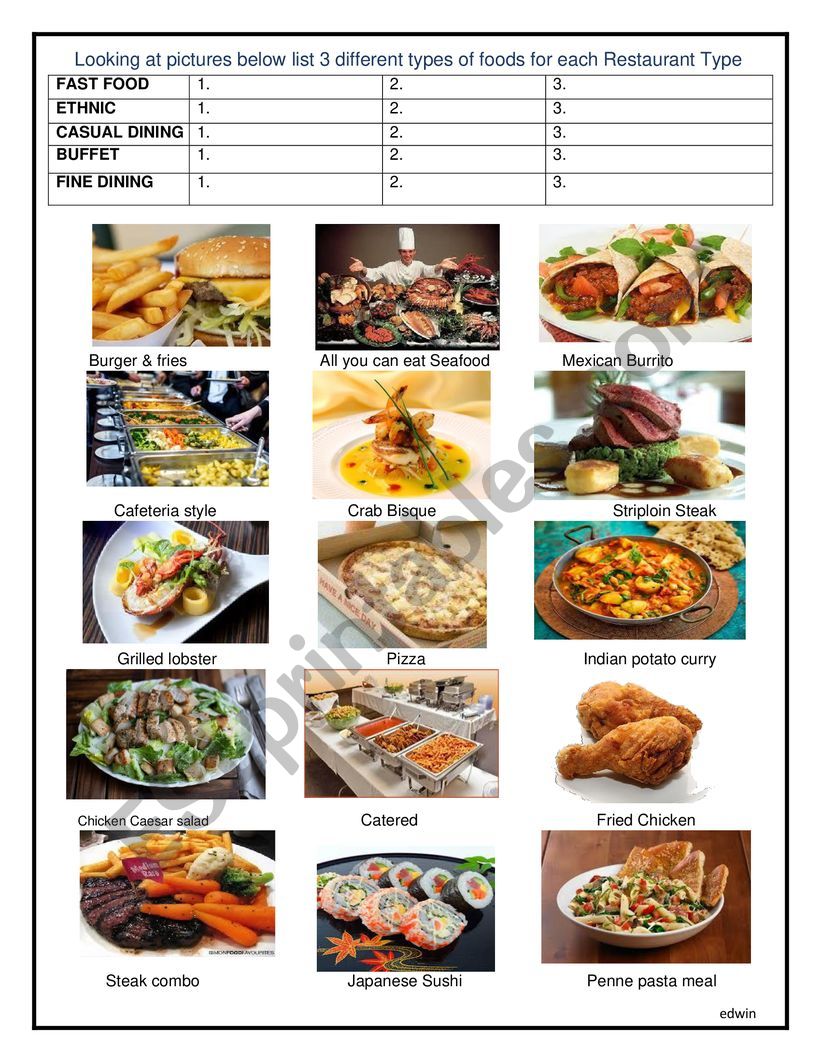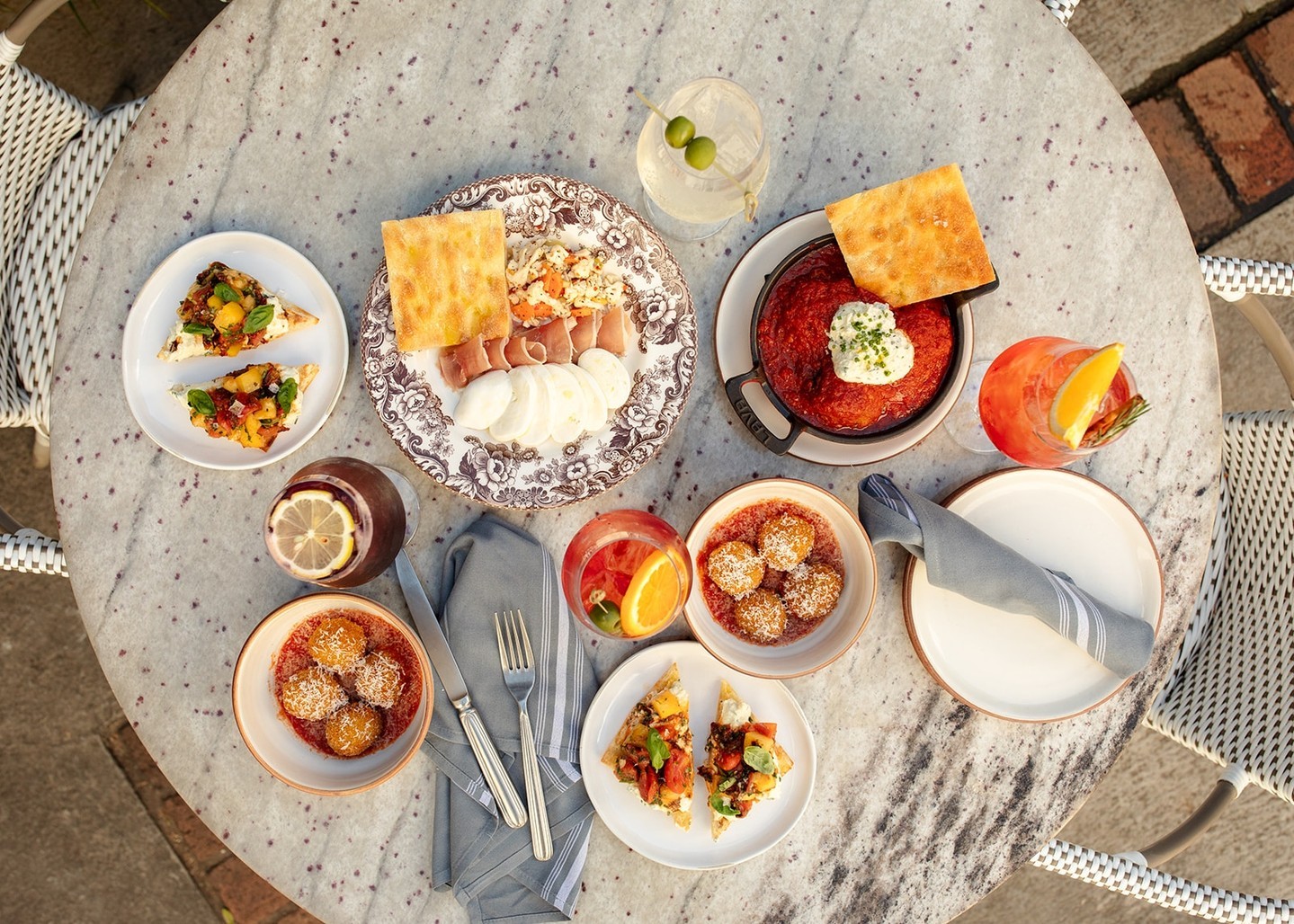A chef-approved list of Best Restaurants across the globe
A chef-approved list of Best Restaurants across the globe
Blog Article
Eating Thrills: Explore Innovative Restaurants Transforming the Food Scene
The modern dining landscape is experiencing a remarkable transformation, noted by ingenious restaurants that are redefining culinary norms. From the rise of pop-up establishments embracing seasonal components to immersive experiences that engage the senses in unmatched means, these locations are establishing brand-new criteria of what it implies to delight in a meal. Furthermore, a growing emphasis on sustainability and local sourcing shows a commitment to both top quality and community. As we discover these trends, the concern occurs: what future growths might additionally improve our cooking experiences?
The Increase of Pop-Up Restaurants
As the culinary landscape evolves, pop-up restaurants have actually emerged as a vibrant force, enchanting food enthusiasts and business owners alike. These short-term dining establishments, typically established in unique rooms, use an unique mix of imagination and accessibility, attracting a varied variety of consumers. The rise of pop-up restaurants can be credited to several variables, consisting of the expanding demand for unique dining experiences and the entrepreneurial spirit of chefs keen to examine their culinary concepts without the economic worry of an irreversible location.Pop-up restaurants allow chefs to try out food selections, designs, and themes, usually concentrating on seasonal or locally-sourced active ingredients. This flexibility not just promotes development however also creates a sense of urgency, as clients are drawn to the limited-time offerings. The ephemeral nature of pop-ups cultivates a buzz around the dining experience, encouraging social networks sharing and word-of-mouth promo, which can greatly enhance presence and draw in a loyal following.Furthermore, pop-up restaurants frequently deal with niche markets, varying from vegan and gluten-free options to ethnic cuisines, therefore fulfilling the diverse nutritional preferences of modern-day consumers. As an outcome, these facilities add to the abundant tapestry of the food scene, pushing borders and challenging traditional concepts of eating.
Immersive Dining Experiences

Lasting Practices in Cuisine
Welcoming sustainability, innovative dining establishments are redefining their cooking practices to minimize ecological impact while boosting the dining experience. These facilities focus on regional sourcing, usually collaborating with close-by farmers and manufacturers to assure that components are fresh and seasonal. This not just decreases the carbon footprint related to long-distance transportation yet also sustains local economies.In addition to sourcing, restaurants are progressively embracing practices that minimize waste. Numerous are applying composting systems and using food scraps creatively, changing what would generally be thrown out right into tasty components of new meals. Veggie trimmings can discover brand-new life in supplies or garnishes, while stale bread is repurposed right into croutons or bread puddings.Moreover, the fad in the direction of plant-based menus is getting momentum. By emphasizing veggies, grains, and legumes, restaurants can greatly reduce their environmental effect, as plant-based foods commonly require fewer resources and create much less greenhouse gas emissions contrasted to meat manufacturing. Cutting-edge cooks are crafting meals that not only celebrate these active ingredients however additionally give restaurants with a phenomenal culinary experience.Furthermore, several establishments are adopting environmentally friendly methods such as using naturally degradable product packaging for takeout and investing in energy-efficient devices. These procedures mirror a dedication to sustainability at every degree of procedure, enabling diners to enjoy their meals with the knowledge that their selections add to a much healthier world. As the food scene remains to progress, the integration of lasting practices ends up being not simply a trend, yet a required requirement for the future of eating
Tech-Enhanced Dining Adventures
Tech-enhanced dining experiences are reinventing the way customers experience dishes, with over 70% of restaurants currently incorporating digital developments to elevate solution and engagement. These improvements are not just fads; they are basic changes that redefine the cooking landscape. From the minute restaurants enter a dining establishment, modern technology is perfectly woven into the experience, improving both ease and enjoyment.One of the most notable technologies is making use of mobile applications for reservations and menu browsing. Diners can currently check out detailed summaries, dietary info, and even the origins of components at their fingertips. This openness cultivates educated choices and permits guests to customize their dining experience to their preferences.Furthermore, interactive tables outfitted with touchscreens supply an engaging system for ordering and amusement. Diners can personalize their meals, discover a glass of wine pairings, or also play games while waiting on their dishes. This integration of innovation not just streamlines the purchasing process yet additionally transforms dining into a dynamic, public activity.Moreover, some establishments are using augmented reality (AR) to develop immersive eating experiences. By merely directing a smart device at a recipe, customers can imagine the active ingredients and cooking methods in an engaging fashion, bridging the void between the cooking and electronic worlds.As dining establishments proceed to accept these technological technologies, the eating experience ends up being progressively personalized, reliable, and satisfying. This makeover shows a wider trend towards enhancing client interaction, making sure that each dish is not practically food, however a memorable adventure in eating.
Global Tastes With a Spin
The culinary landscape is increasingly marked by combination cuisine technologies that blend standard flavors with unexpected components - Restaurants. One-of-a-kind active ingredient pairings not only boost the eating experience however likewise pay homage to social heritage, reimagining cherished recipes in interesting brand-new methods (Eddie's Rise N' Dine Williamsville IL). This imaginative technique invites diners to explore varied global influences while experiencing acquainted tastes in a fresh context
Combination Cuisine Innovations
Creativity in the cookeries has actually resulted in a dynamic renewal of combination cuisine, where cooks blend varied worldwide tastes to create cutting-edge meals that oppose standard borders. This culinary motion transcends plain combination, concentrating on the harmonious integration of active ingredients and techniques from various cultures.Restaurants specializing in combination food are redefining dining experiences by providing meals that narrate with flavor, method, and discussion. As an example, the marriage of Japanese sushi with Peruvian ceviche has caused one-of-a-kind rolls that commemorate both culinary heritages. Likewise, Indian spices have actually found their means into Italian pasta dishes, supplying a delightful twist on timeless recipes.Chefs are likewise exploring with cooking techniques, such as using traditional frying pan techniques to prepare Latin American stir-fries, thus producing an abundant tapestry of preferences and appearances. Seasonal accessibility of active ingredients better enhances this creative procedure, enabling fresh interpretations of classic recipes. The appeal of fusion food lies in its capacity to surprise and joy the taste buds, encouraging diners to explore new culinary landscapes while promoting a higher admiration for the variety of international gastronomy.
One-of-a-kind Ingredient Pairings
Culinary technology usually prospers on the unforeseen, and unique ingredient pairings are at the leading edge of this fad in the contemporary eating landscape. Chefs are significantly trying out mixes that amaze and thrill the taste buds, elevating the eating experience beyond standard boundaries.For example, the juxtaposition of pleasant and full-flavored has actually come to be a characteristic of modern cuisine. Restaurants Near Me. Think about crispy duck offered with a cherry and balsamic polish, where the tartness of the cherries complements the richness of the meat. Dishes including miso-infused delicious chocolate treats display how umami can improve sweet taste, producing a balanced flavor profile that intrigues diners.Furthermore, the usage of unusual seasonings in unanticipated contexts, such as saffron in a classic risotto combined with lemon enthusiasm, highlights exactly how cooking borders can be redefined. These innovative pairings not only produce aesthetic and textural contrasts yet likewise welcome diners to explore a range of global tastes in a single dish.As restaurants proceed to forge ahead, the adventure of uncovering brand-new tastes via unique ingredient pairings guarantees to be a defining attribute of the modern-day food scene, welcoming adventurous eaters to delight in these innovative cooking discussions
Cultural Heritage Reimagined

The Art of Multi-Sensory Cuisines
In the domain name of cooking advancement, multi-sensory meals are changing the dining experience by intertwining taste and scent in charming ways. The effect of aesthetic presentation enhances not just the aesthetic appeal however also the assumption of preference, while meticulously curated soundscapes raise the atmosphere. With each other, these components produce an all natural experience that engages all detects, changing exactly how patrons attach with food.
Taste and Fragrance Fusion
An expanding variety of chefs are accepting the concept of taste and aroma fusion, acknowledging that a meal is not merely a mix of components but an all natural experience that involves all the detects. This cutting-edge approach stresses the intricate partnership in between taste and odor, both of which greatly influence our assumption of food.Chefs are trying out numerous techniques to boost tastes while at the same time crafting fragrant profiles that boost the eating experience. For instance, the usage of fragrant natural herbs and seasonings not just adds depth to dishes but additionally entices the olfactory detects, creating a more immersive experience. Mixtures, smoke, and necessary oils are progressively popular, allowing chefs to adjust scent and improve the overall flavor profile.Moreover, the tactical pairing of corresponding and different flavors can evoke emotional responses, transforming a meal into a remarkable occasion. Diners are encouraged to appreciate each bite, as the interaction of flavors and aromas unravels, inviting them to discover brand-new measurements of preference. This thoughtful combinations of sensory aspects cultivates a gratitude for the artistry of cuisine, positioning taste and aroma blend as an essential fad in modern-day gastronomy.
Aesthetic Presentation Influence
Past taste and fragrance, the visual presentation of a meal plays a crucial duty in the general dining experience. The looks of food can evoke emotions, established the tone for the meal, and enhance the expectancy of sampling. Cutting-edge dining establishments are significantly identifying that a recipe's appearance can affect guests' assumptions and fulfillment degrees, occasionally even before the first bite is taken.Artful plating methods, vibrant shade combinations, and imaginative garnishes add to a dish's visual attraction. Cooks are now trained not just in culinary skills, but also in the art of presentation, frequently attracting ideas from various artistic self-controls. For instance, the usage of unfavorable area in plating aids to create prime focus, allowing the ingredients to shine.Moreover, the pattern of multi-sensory meals integrates aesthetic aspects with various other senses, such as structure and temperature level, to develop a holistic dining experience. This technique encourages restaurants to engage even more deeply with their food, changing a straightforward dish right into a remarkable occasion. Fundamentally, the visual discussion of food is not merely an aesthetic endeavor; it is an essential component of the dining experience that can raise a dish from ordinary to extraordinary.
Soundscapes in Eating
The experience of eating extends past the visual aspects of a dish; audio likewise plays a substantial function in forming how food is regarded and appreciated. Cutting-edge restaurants are increasingly checking out the idea of soundscapes-- curated audio environments created to enhance the dining experience (American Restaurant). The interplay of audio and taste can exceptionally influence an individual's understanding of flavor, texture, and total satisfaction.Research indicates that details noises can magnify or reduce flavors. High-pitched noises may improve sweet taste, while reduced frequencies can enhance bitterness. This phenomenon has actually led some chefs and restaurateurs to work together with sound developers, creating unique auditory backgrounds that enhance their culinary offerings. Best Restaurants.In these setups, restaurants may find themselves involved in a very carefully crafted audio environment, ranging from the gentle rustle of leaves to the rhythmic audios of a bustling kitchen area. Such multisensory meals not only involve the taste buds however also evoke emotional feedbacks, enhancing the general experience. By using the power of noise, these ingenious dining establishments are redefining the way we experience food, urging clients to enjoy each bite while completely involving their senses
Community-Centric Culinary Initiatives
Regularly, ingenious restaurants are redefining their functions within neighborhood areas by applying cooking initiatives that focus on social duty and inclusivity. These establishments are significantly interesting in methods that not only improve their company models but also add to the welfare of their neighborhoods.One famous trend is the facility of community cooking areas that use cooking training and job positioning for underserved populations. These cooking areas not just supply beneficial abilities yet additionally promote a feeling of belonging, empowering people to produce their very own culinary courses. In addition, many dining establishments are partnering with regional farms and producers, highlighting farm-to-table techniques that sustain sustainable agriculture and decrease carbon footprints. This not only guarantees freshness and top quality but additionally strengthens neighborhood economies.Another campaign gaining grip is the concept of public eating experiences, where varied groups collaborated to share meals and tales. This method cultivates understanding and recognition among different societies, breaking down barriers and cultivating inclusivity. Dining establishments are progressively taking on waste reduction approaches, such as composting and recycling food scraps, which not only addresses environmental problems yet also encourages clients to reflect on their consumption behaviors.
Often Asked Questions
How Do Cutting-edge Dining Establishments Keep Consistency in Food High Quality?

What Are the Expenses Connected With Beginning a Pop-Up Restaurant?
Starting a pop-up dining establishment involves various expenses, consisting of location rental, tools purchases, allows, marketing, staffing, and food materials. Additionally, entrepreneurs ought to spending plan for unforeseen expenditures to ensure smooth operations during the endeavor's duration.
Just How Do Dining Establishments Pick Their Areas for Pop-Up Occasions?
Restaurants select pop-up occasion areas based on target demographics, foot traffic, availability, and competitors. Additionally, they take into consideration neighborhood market fads and neighborhood interaction possibilities to optimize visibility and improve client experience throughout the occasion.
What Influence Do Food Trends Carry Restaurant Menus?
Food patterns substantially influence dining establishment menus by directing ingredient selection, influencing recipe imagination, and forming customer choices. Establishments often adapt to these fads to improve client appeal, maintain competition, and straighten with developing cooking expectations.
Just How Can Diners Assistance Community-Centric Culinary Initiatives?
Restaurants can support community-centric cooking initiatives by patronizing local restaurants, joining farm-to-table occasions, involving with food cooperatives, advertising lasting methods, and advocating for plans that enhance neighborhood food systems and improve area wellness.
Report this page